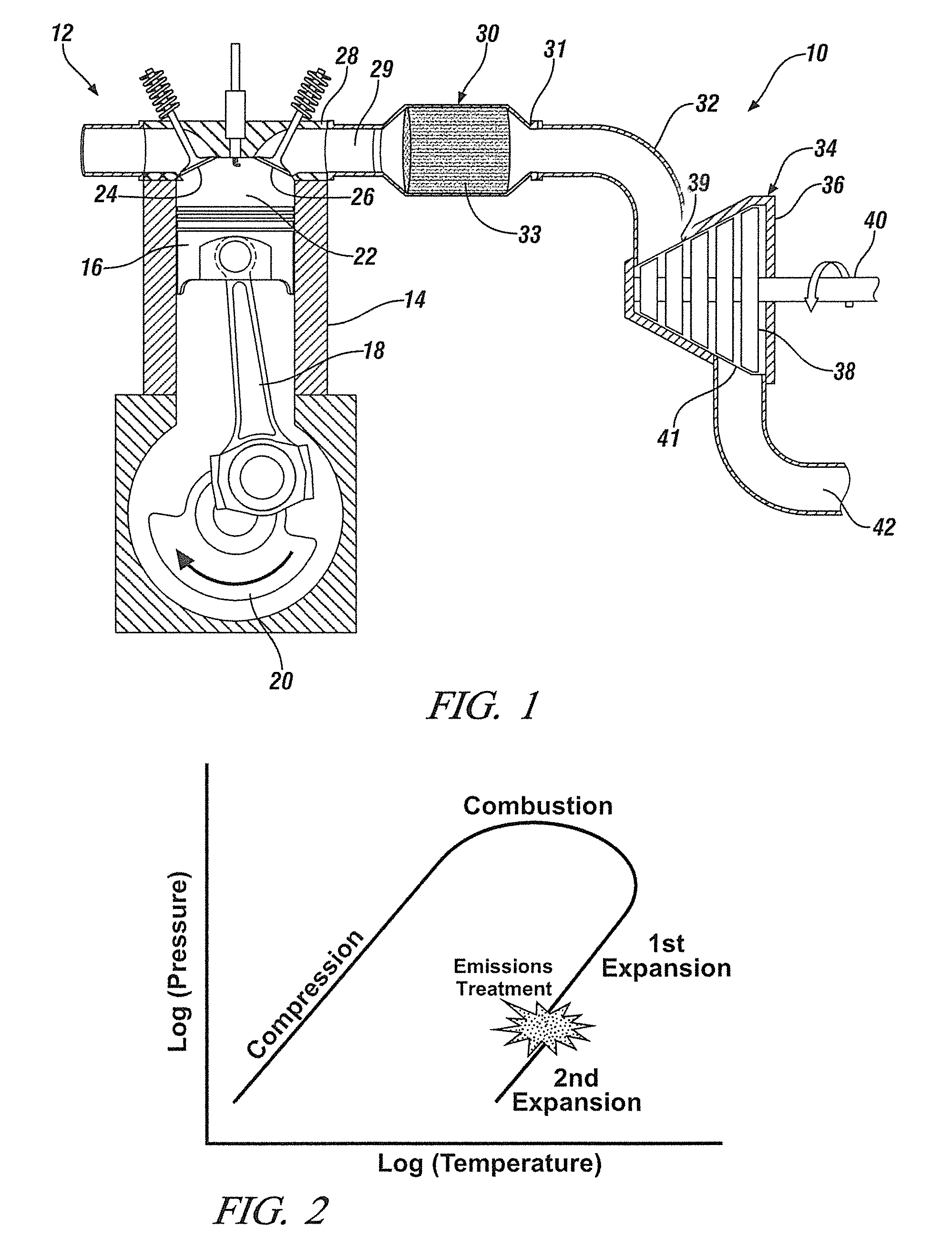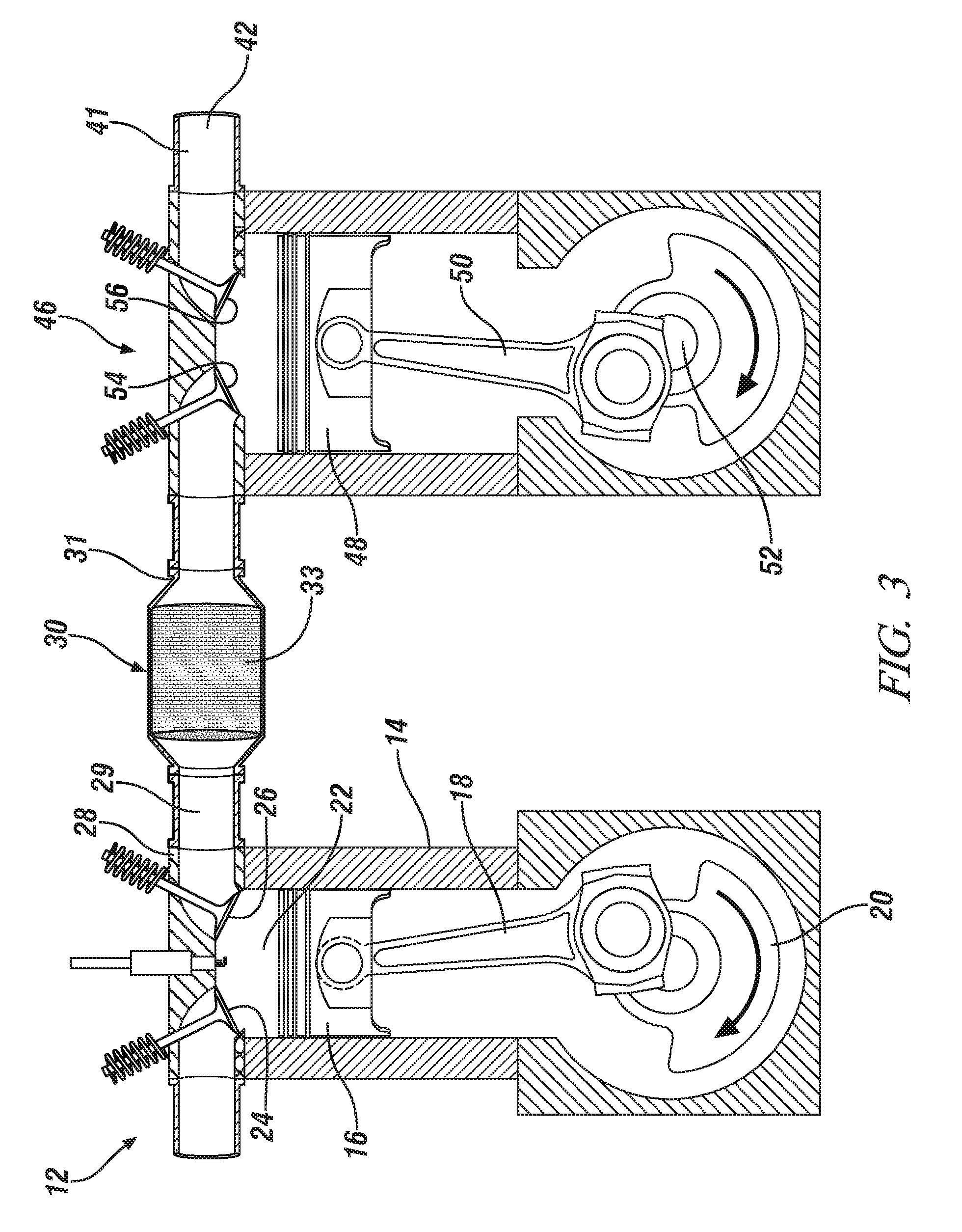Internal combustion engine with emission treatment interposed between two expansion phases
a technology of emission treatment and combustion engine, which is applied in the direction of engine components, machines/engines, mechanical equipment, etc., to achieve the effect of reducing emissions
- Summary
- Abstract
- Description
- Claims
- Application Information
AI Technical Summary
Benefits of technology
Problems solved by technology
Method used
Image
Examples
Embodiment Construction
[0015]Referring now to FIG. 1, an engine 10 has a piston engine section 12. The engine section 12 can look conventional with an engine block 14, piston 16, crank arm 18, crankshaft 20 and working chamber 22 often referred to as a cylinder. Inlet and outlet valves 24 and 26 also commonly referred to as intake value 24 and exhaust value 26 allow for intake of air and exhaust or discharge of the working gases, also referred to as the combustion gases. The engine section 12 operates and functions like a conventional engine during the induction, compression and combustion phase. However, the power stroke or expansion phase is reduced compared to a conventional engine. As such, the working gases remain at higher pressures at the time when the outlet valves open and the discharge stroke commences.
[0016]While a piston engine is shown in FIG. 1 as the first expander, it should be understood other engines may be used. Diesel, Otto cycle, Atkinson, Miller cycle, Brayton cycle, or split-cycle e...
PUM
 Login to View More
Login to View More Abstract
Description
Claims
Application Information
 Login to View More
Login to View More - R&D
- Intellectual Property
- Life Sciences
- Materials
- Tech Scout
- Unparalleled Data Quality
- Higher Quality Content
- 60% Fewer Hallucinations
Browse by: Latest US Patents, China's latest patents, Technical Efficacy Thesaurus, Application Domain, Technology Topic, Popular Technical Reports.
© 2025 PatSnap. All rights reserved.Legal|Privacy policy|Modern Slavery Act Transparency Statement|Sitemap|About US| Contact US: help@patsnap.com



